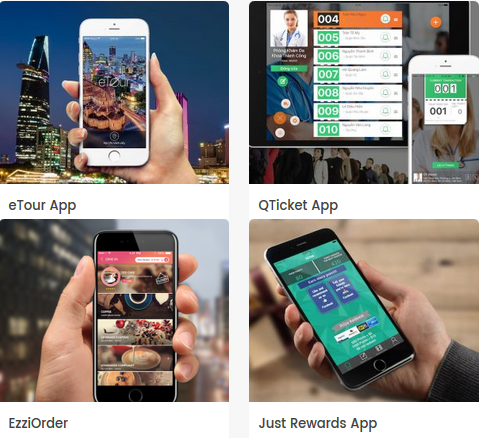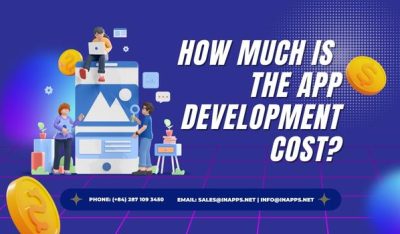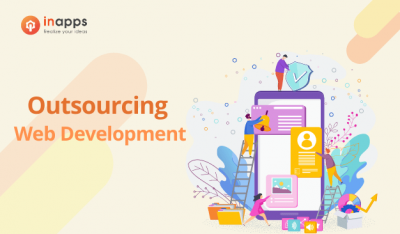- Home
- >
- Mobile apps development
- >
- 10 Biggest Challenges Faced by Mobile App Developers

If you are planning to develop an app, your focus should be more on ‘what not to do’ than on ‘what to do’. There are several challenges faced by developers every time they start working on a new mobile app.
Key Summary
- Overview: The article by InApps Technology identifies the ten most significant challenges mobile app developers face, offering insights into technical, market, and operational hurdles, along with strategies to overcome them, emphasizing the role of expertise and offshore solutions like those provided by InApps in Vietnam.
- Challenges Faced by Mobile App Developers:
- 1. Device Fragmentation:
- Challenge: Developing apps compatible with diverse devices, screen sizes, and OS versions (e.g., Android’s 24,000+ device types, iOS’s varying iPhone/iPad models).
- Impact: Increases testing complexity and development time.
- Solution: Use responsive design, cross-platform frameworks (e.g., Flutter, React Native), and cloud-based testing tools like BrowserStack.
- Example: Ensuring an app runs smoothly on both a Samsung Galaxy and a Google Pixel.
- 2. Platform-Specific Requirements:
- Challenge: Adhering to strict guidelines for iOS (App Store) and Android (Google Play), which differ in design, functionality, and submission processes.
- Impact: Requires platform-specific optimizations, risking rejection if guidelines aren’t met.
- Solution: Study Apple’s Human Interface Guidelines and Google’s Material Design; use platform-specific SDKs.
- Example: Adapting an app’s UI for iOS’s notched displays vs. Android’s varied aspect ratios.
- 3. Performance Optimization:
- Challenge: Ensuring apps run smoothly with minimal battery drain, fast load times, and low memory usage, especially on low-end devices.
- Impact: Poor performance leads to user churn and negative reviews.
- Solution: Optimize code, use lazy loading, and test on diverse hardware with tools like Android Profiler or Xcode Instruments.
- Example: Reducing an app’s startup time to under 2 seconds on budget Android phones.
- 4. Security and Data Privacy:
- Challenge: Protecting user data against breaches and complying with regulations like GDPR, CCPA, or HIPAA.
- Impact: Security flaws damage trust and incur legal penalties.
- Solution: Implement encryption (e.g., AES-256, TLS), secure APIs, and regular penetration testing; anonymize data.
- Example: Securing a healthcare app’s patient data with end-to-end encryption.
- 5. User Experience (UX) Design:
- Challenge: Creating intuitive, engaging interfaces that meet user expectations across diverse demographics.
- Impact: Poor UX leads to low retention and bad reviews.
- Solution: Conduct user research, prototype with tools like Figma, and perform usability testing.
- Example: Designing a seamless checkout flow for an e-commerce app to reduce cart abandonment.
- 6. Integration with Third-Party Services:
- Challenge: Integrating APIs, SDKs, or services (e.g., payment gateways, maps, analytics) without compromising performance or stability.
- Impact: Faulty integrations cause crashes or delays.
- Solution: Use well-documented APIs, test integrations thoroughly, and maintain fallback mechanisms.
- Example: Integrating Stripe for payments while ensuring compatibility with the app’s backend.
- 7. Keeping Up with Technology Trends:
- Challenge: Adapting to rapidly evolving technologies like AI, AR/VR, 5G, or foldable devices.
- Impact: Outdated apps lose competitive edge.
- Solution: Continuous learning, attending tech conferences, and leveraging frameworks that support new features.
- Example: Adding AR try-on features to a retail app for foldable smartphones.
- 8. App Store Optimization (ASO):
- Challenge: Improving app visibility and downloads in crowded app stores with millions of apps.
- Impact: Poor ASO reduces discoverability and user acquisition.
- Solution: Optimize keywords, app descriptions, screenshots, and ratings; monitor analytics with tools like App Annie.
- Example: Using targeted keywords to rank a fitness app higher in Google Play searches.
- 9. Managing Development Costs:
- Challenge: Balancing quality with budget constraints, especially for startups with limited funding.
- Impact: High costs can derail projects or compromise quality.
- Solution: Use cross-platform tools to reduce coding effort; outsource to cost-effective regions like Vietnam ($20–$50/hour vs. $80–$150/hour in U.S./EU).
- Example: A startup outsources to InApps in HCMC to build an MVP at 30% lower cost.
- 10. Post-Launch Maintenance:
- Challenge: Addressing bugs, updating for new OS versions, and adding features post-launch while maintaining user satisfaction.
- Impact: Neglecting maintenance leads to crashes and user loss.
- Solution: Implement CI/CD pipelines, monitor crashes with tools like Firebase Crashlytics, and plan for regular updates.
- Example: Releasing patches for an app to support iOS 18’s new APIs.
- 1. Device Fragmentation:
- Benefits of Addressing Challenges:
- Competitive Advantage: High-quality, secure, and user-friendly apps stand out in crowded markets.
- Cost Efficiency: Offshore development in Vietnam saves 20–40% while maintaining quality.
- User Retention: Optimized performance and UX improve engagement and loyalty.
- Compliance: Adhering to privacy laws avoids legal risks.
- Scalability: Robust maintenance ensures long-term app relevance.
- Challenges’ Impact:
- Time Delays: Device fragmentation and platform requirements extend development cycles.
- Increased Costs: Security, testing, and maintenance demand significant resources.
- User Dissatisfaction: Poor UX or performance leads to negative reviews and churn.
- Market Risk: Failure to keep up with trends or ASO reduces competitiveness.
- Security Considerations:
- Encryption: Use TLS for data in transit and AES for data at rest.
- Authentication: Implement OAuth 2.0 or JWT for secure user access.
- Testing: Conduct penetration tests with tools like OWASP ZAP to identify vulnerabilities.
- Compliance: Ensure GDPR/CCPA adherence for user data handling.
- Example: InApps secures a fintech app’s API with JWT and regular security audits.
- Use Cases:
- E-commerce: Overcoming UX and performance challenges for seamless shopping apps.
- Healthcare: Ensuring HIPAA-compliant, secure telemedicine apps.
- Gaming: Addressing device fragmentation for cross-platform mobile games.
- Fintech: Integrating secure payment APIs with robust testing.
- Education: Building scalable e-learning apps with intuitive UX.
- InApps Technology’s Role:
- Leading HCMC-based provider with 500+ developers skilled in mobile app development (Flutter, React Native, Swift, Kotlin).
- Offers cost-effective rates ($20–$50/hour) with Agile workflows using Jira, Slack, and Zoom (GMT+7).
- Provides end-to-end solutions, from design to post-launch maintenance, addressing all listed challenges.
- Example: InApps delivers a cross-platform e-commerce app for a U.S. client, optimizing for performance and ASO.
- Recommendations:
- Use cross-platform frameworks (e.g., Flutter) to tackle device fragmentation and reduce costs.
- Prioritize security and UX early in development to ensure compliance and user satisfaction.
- Outsource to Vietnam for cost-effective, high-quality mobile app development.
- Partner with InApps Technology for expert solutions, leveraging HCMC’s talent pool to overcome mobile development challenges efficiently.
10 biggest challenges faced by mobile app developers
1. Creating Apps which Get Noticed
There’s immense competition in the mobile app market and honestly, it’s very crowded. Thus, there’s a constant pressure to create apps which get noticed. After all, you don’t want to get lost.
Solution: Create an app which looks great. Include graphics, usable features, and intuitive design. Aim at providing a wholesome experience. Take cues from successful apps in your niche to understand what clicks with users. Answer the following questions, and you’ll know if your idea can crack into this competitive market.
- Who is my target group?
- What is the aim of the app?
- Which function does the app have?
- Is the app absolutely new or does it improve an existing one or is it an add-on etc.? (Analyze the innovation level, do some research!)
- Is there a market for the app? (Do a competitor and/or benchmark analysis or user survey!)
- What will be the price of the app? (Analyze the profitability!)
- Where will the app be sold? (Selling via the most popular app stores or via extra channels and other/own websites?)
- What is it that I am offering and no one has offered before?
Remember — make an app which makes life simple, productive and pleasant.
2. Getting the App Funded
Now that you have a killer app idea, how do you get it funded? Depending on the nature of the app, the cost of development can be anywhere from $3,000 to $150,000. How do you get the money?
Solution: Before you meet the right investors, there are several ways you can raise funds. Approach your social circle, apply for loans, ask friends and relatives and look for joint venture companies which invest in such apps. You may also try crowdfunding — platforms like Kickstarter and AppBackr are great starting points. App contests can also be the way to go if you have a winning idea in mind.
3. Dealing with the Screen Real Estate
Users have many different devices with different screen sizes. And designing only for the latest platform is a big no-no. So the challenge is to create an app which can run across as many devices as possible. Countless mobile platforms have different limitations based on screen sizes, OS requirements, embedded technologies, pixel intensities etc. However, it’s not only about the devices. You need to consider the OS as well. iOS, Android, and Windows — each of these three main systems has its own UI objects and patterns. So be prepared for some bug fixing every now and then.
Solution: Responsive Design. It gives screens more liquidity and thus can be adjusted to suit different formats and various screen sizes. Facebook is a great example.
To deal with technical OS issues, having a marked testing phase helps. Releasing a beta version of the app is also recommended.
4. Making the App Interactive
Interactions are just as important as responsive design. Mobile devices today are laden with high-tech sensors, thus offering a plethora of opportunities. So make the most of these sensors! Creating interactions, however, is time-consuming and can be a challenge to deal with during the design phase.
Solution: Consider interactions well in advance to save time during the design phase. And aim for a comprehensive app experience. Don’t restrict yourself to tap and swipe gestures. Use buttons with various click options and consider overlays to display additional information. Bring more tangible interactions like titling, shaking and flipping into play, which allow the app to respond to position, direction and environment of the device and trigger some action.
5. Keeping it Simple and Clear
An app that makes users think isn’t a good app. The challenge is to design an application which is self-explanatory. But keep in mind that if the functioning of the app is clear to you (the developer), it isn’t necessarily clear to the users as well.
Solution: The trick is to use a simple and clear structure and give brief instructions, tutorials etc. explaining what needs to be done and how. You may use thumbnails and icons to display information in a compact manner. However, make sure these icons correspond to the native UI elements of each OS. You can refer to the UI guidelines provided by platforms like Android, Apple iOS and Windows to chose UI patterns users are already acquainted with.
6. It’s Performance vs Battery Life
Besides, design and interaction, app performance and battery consumption are also important aspects of mobile app development. The challenge is to design a well-performing, bug-free app which runs on minimum possible battery. Performance, however, is solely considered to be a development feature and hence dealt with late during the design phase. Plus, different users perceive app performance differently. And then there are the devices. The app might function well on the latest device, but a lot of users are still running on older devices. Too many images or visual effects, flooding the cache, or using integrated sensors may disrupt the performance of your application on older versions.
Solution: Make sure the development team is a part of the prototyping efforts. Besides, set up a beta version to run test cases with test users to avoid any performance trouble in the final version.
7. Mobile Content Management
The need for mobile app content is ever growing. The call of the hour is to include rich content — videos, images, animations etc. However, the performance fails of wireless networks and frequent connection drops make it difficult to deliver reliable yet rich content that consumes a lot of bandwidth. Besides, app stores like Google Play require you to bundle all your rich content into monolithic expansion files. This means whenever you want to update your content, you need to release a new version of the app.
Solution: Mobile content management solutions. There are various systems in the market which aim at simplifying content management for mobiles. They help in optimizing bandwidth usage and delivering content reliably. Alfresco, MobileIron, and AirWatch are some examples.
8. Connecting with the user
The mobile app market is changing rapidly. Innovation and creativity have made this ecosystem highly active. Thus connecting with the users is crucial. And no, it is not just about the features you include in the app.
Solution: Make a positive first impression. This is essential to all relationships. The key is to make your users feel comfortable. Think beyond user-friendly design and interactive features. Give them a recognizable design, colors and logos etched in their memories, or typical fonts. You may even look at your competitor’s app — not to copy the design or flow, but to see what users find interesting and create something unique on the same lines. Besides, it is important to be there for the users always. Listen to their feedback, pay attention to the smallest issues, thank the ones who find them, and provide immediate help. This is the key to winning happy and loyal users.
9. Promoting and Marketing the App
It’s a cliche that most developers don’t care about marketing their apps. However, it’s not true. There are several challenges which developers face while taking their apps to the market. The bottleneck competition, tight timelines and lack of right platforms push developers into keeping app marketing on the back burner.
Solution: A successful app is about 90% marketing and 10% development. So look for the right tools and platforms which can simplify marketing for you. AppTamin, AppScend , MobileDevHQ, and Smore are some tools you must check out. Besides, you can take help from professionals, some who has the required experience and expertise in marketing mobile apps.
10. Lack of Transparency by App Stores
How your app will fare depends partially on the app store you are submitting it to. However, app stores aren’t 100% transparent. There is no way of knowing the market size for different categories or which category is trending globally. In other words, is there a market for the app you are developing? If yes, where is it? Without knowing such basic facts you can only depend on your gut instincts to market the app.
Solution: The only way out is to research. Go through the reports released by various app stores. Based on the data you can get an estimate of where and why your app is most likely to sell.
This post is inspired by a Quora discussion. Are there any challenges you’ve faced while developing a mobile app? Feel free to add to the above list in the comments section below.
Still deciding on the budget of your mobile app? Use the VenturePact cost calculator to determine the right budget in minutes.
Let’s create the next big thing together!
Coming together is a beginning. Keeping together is progress. Working together is success.



















